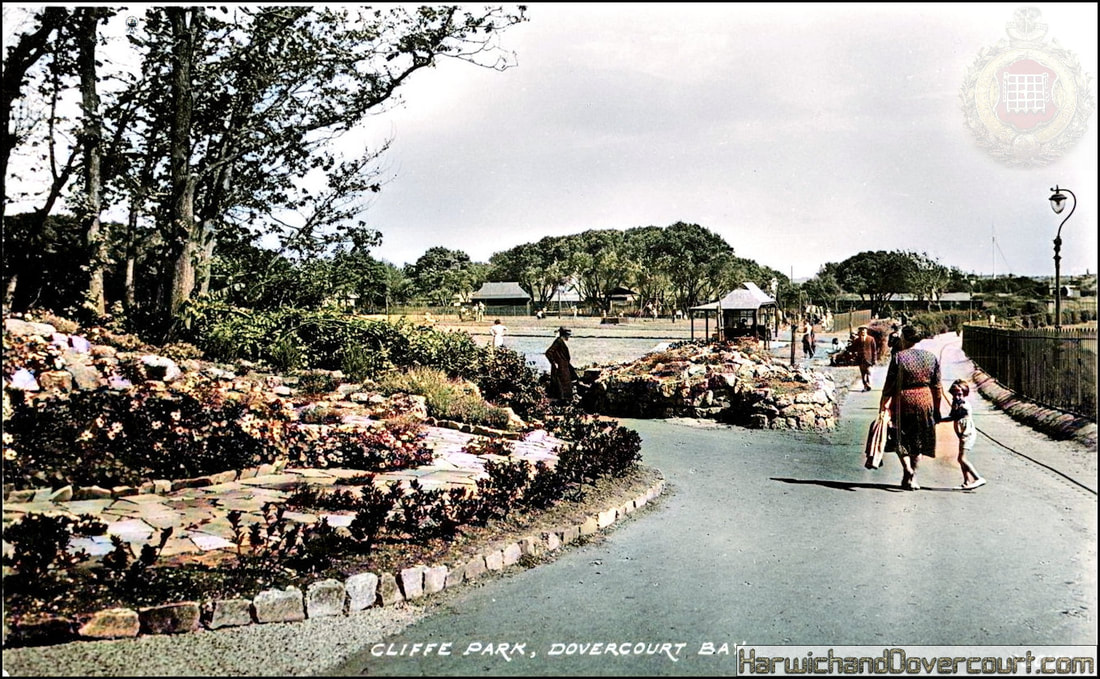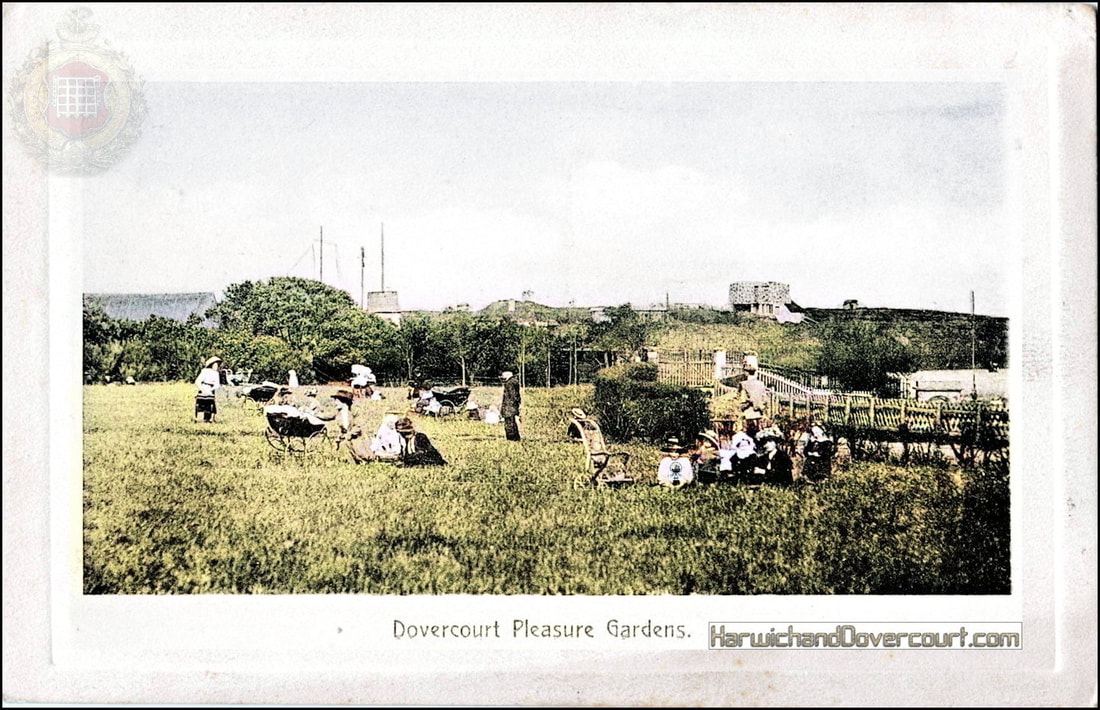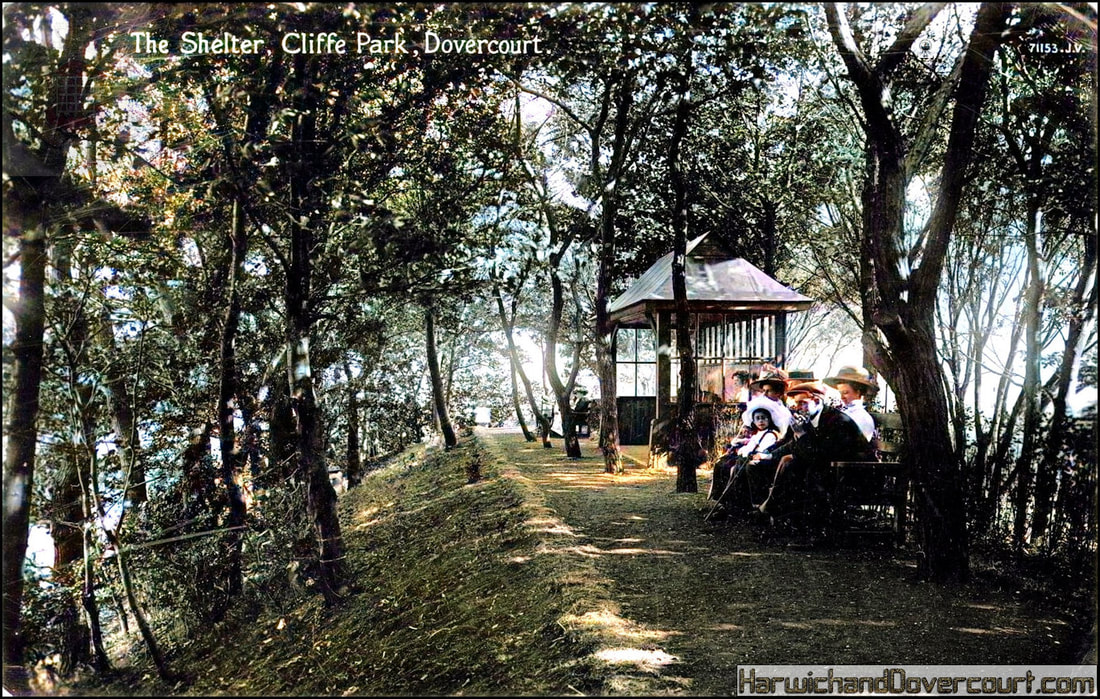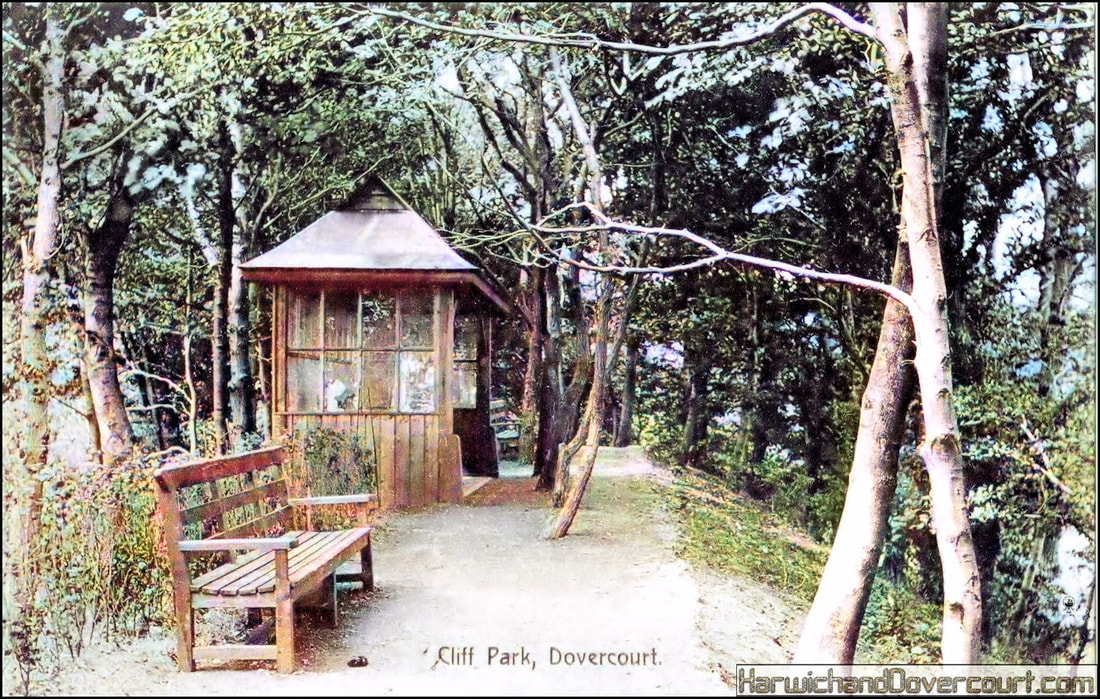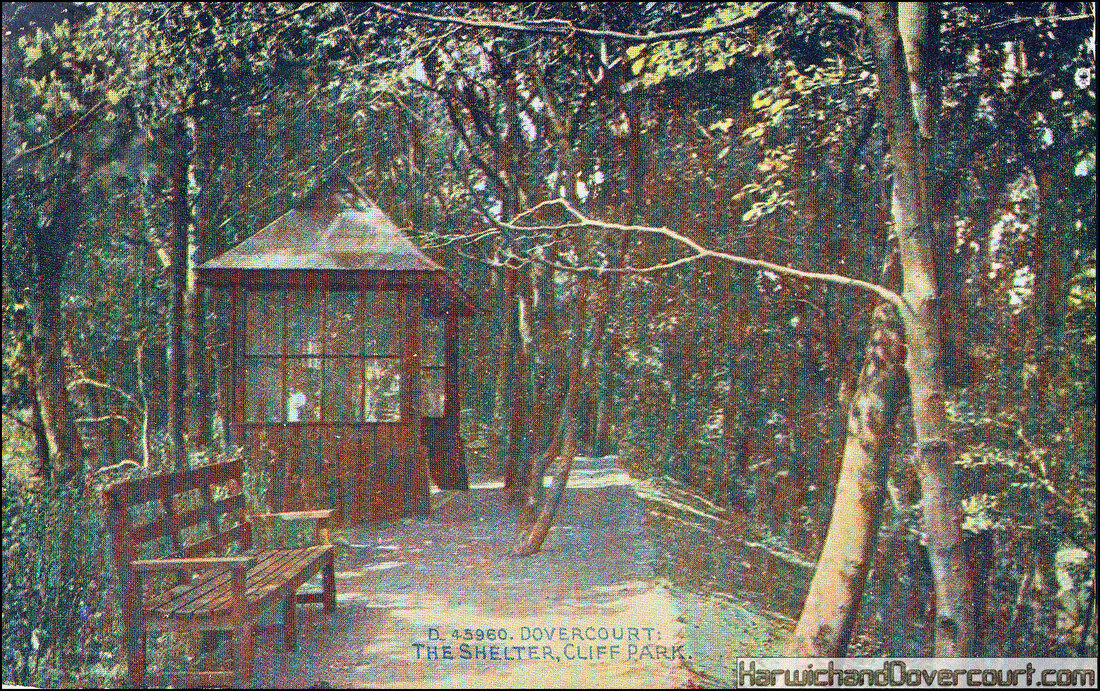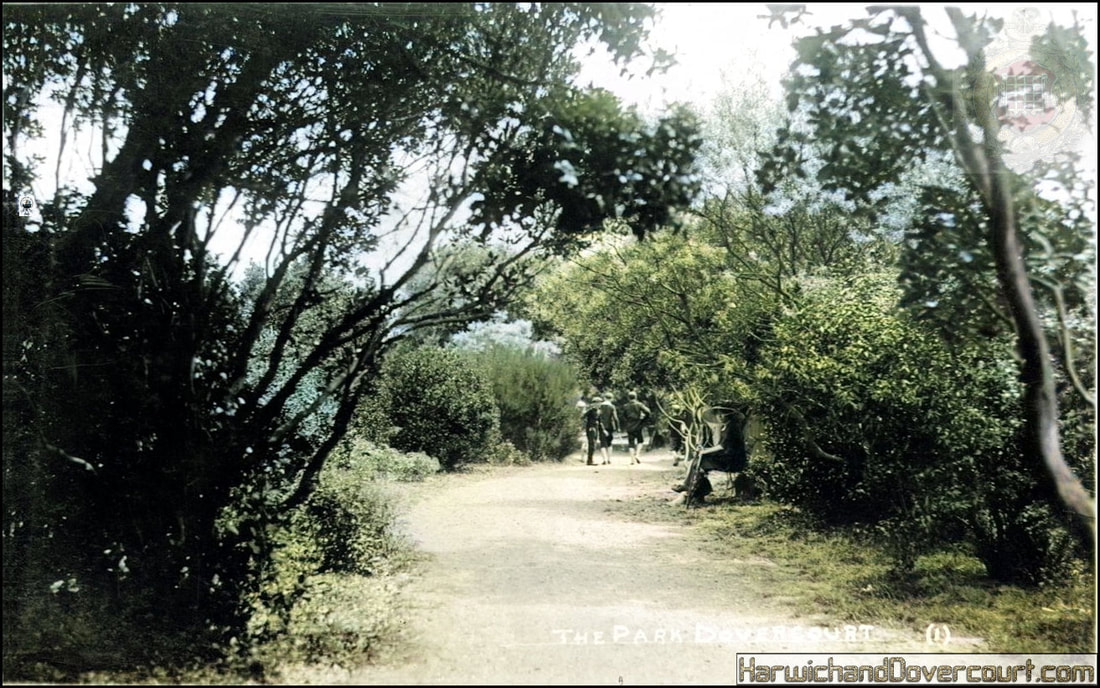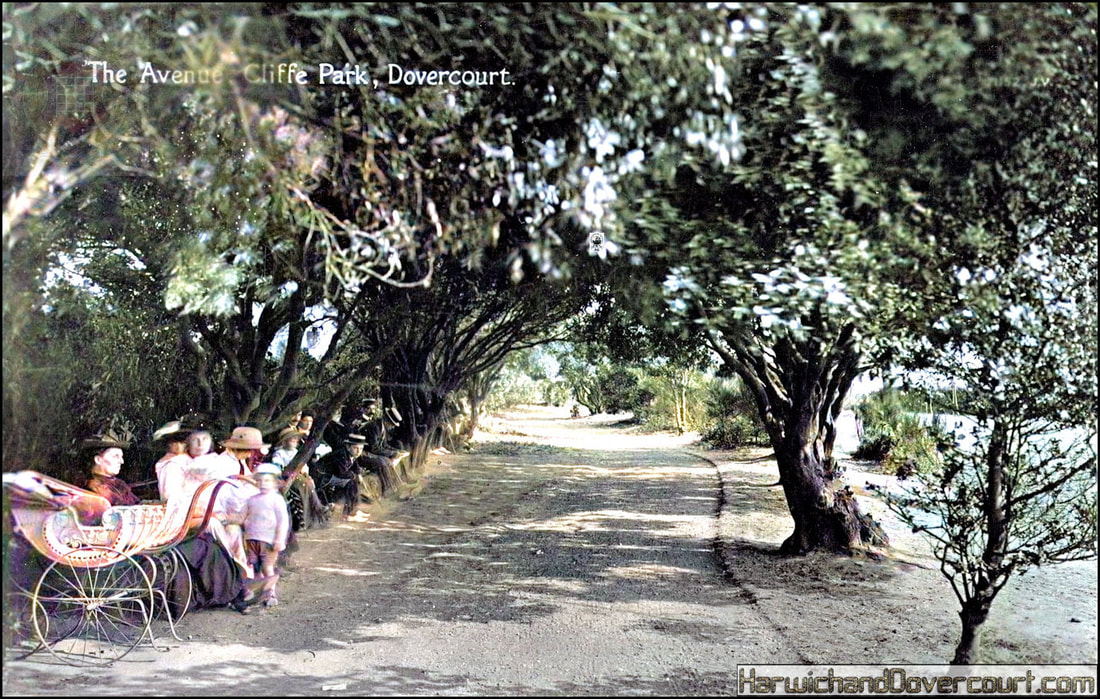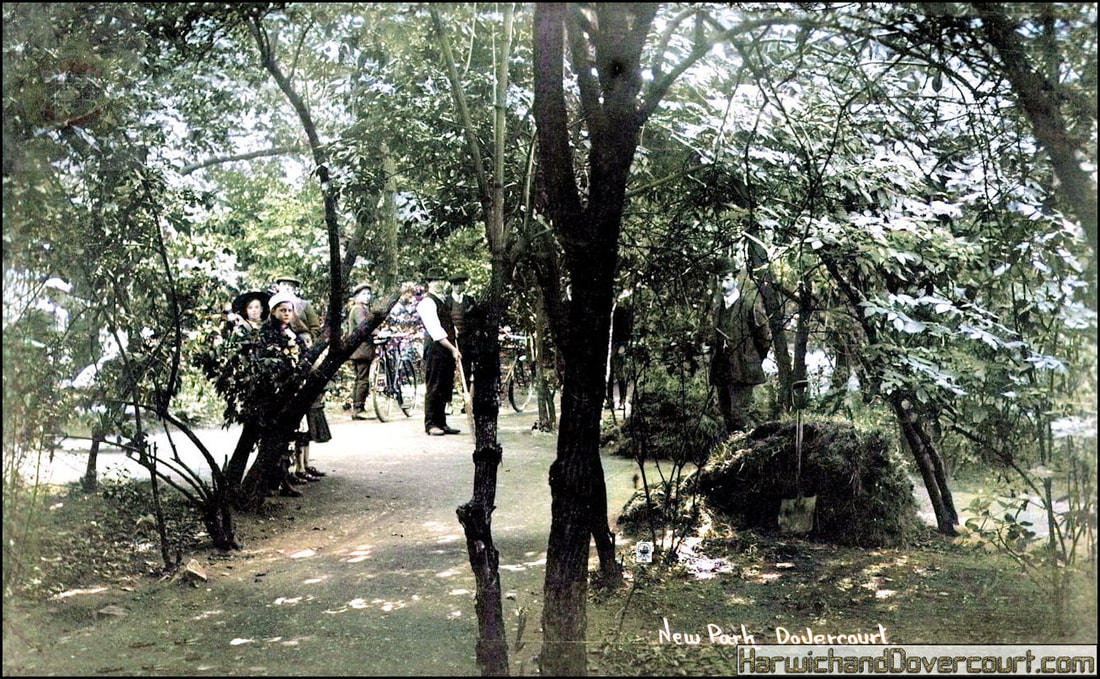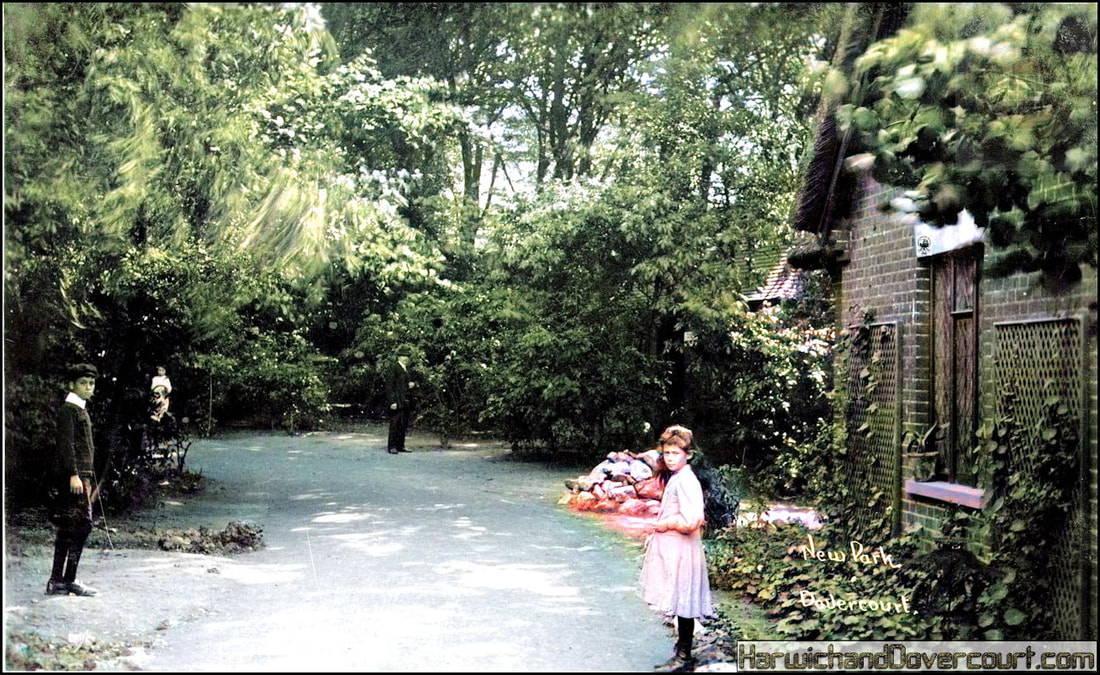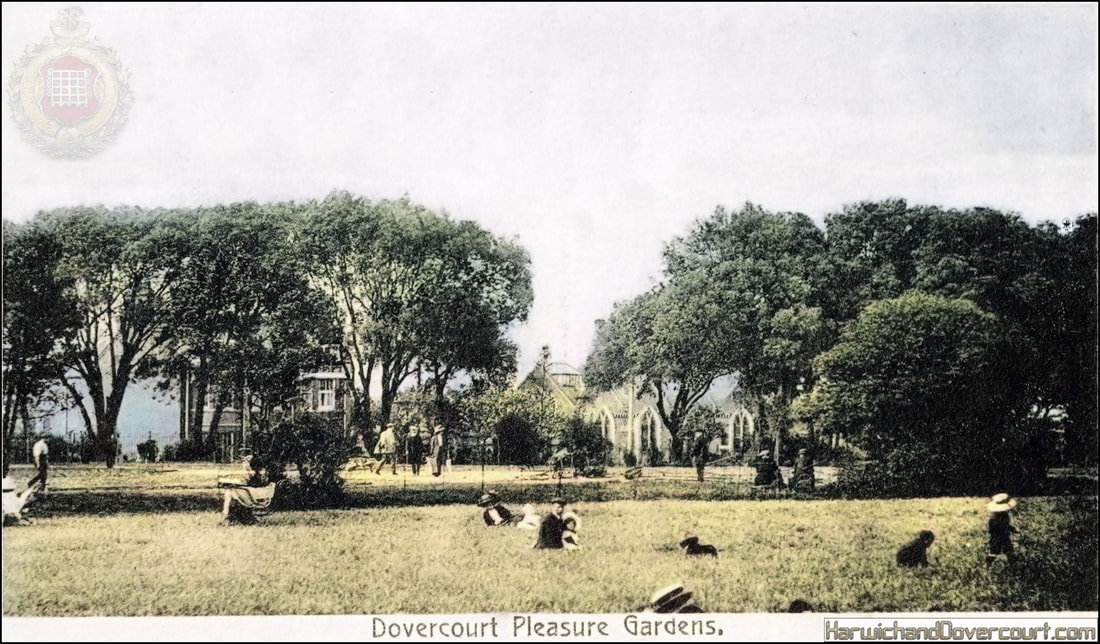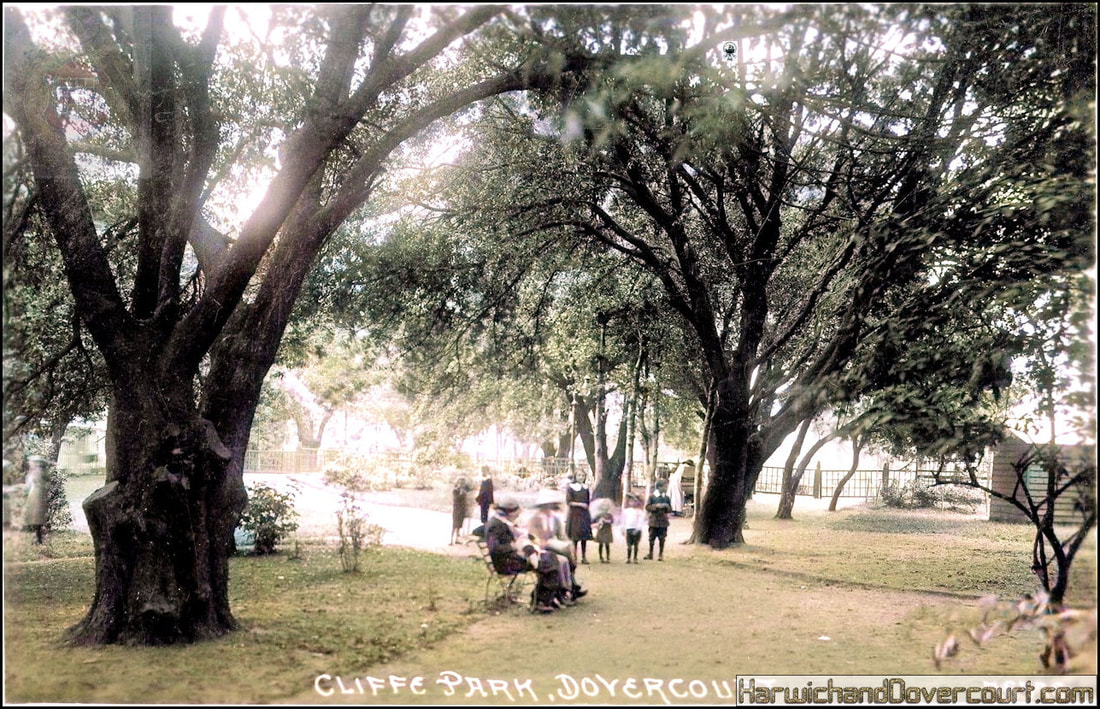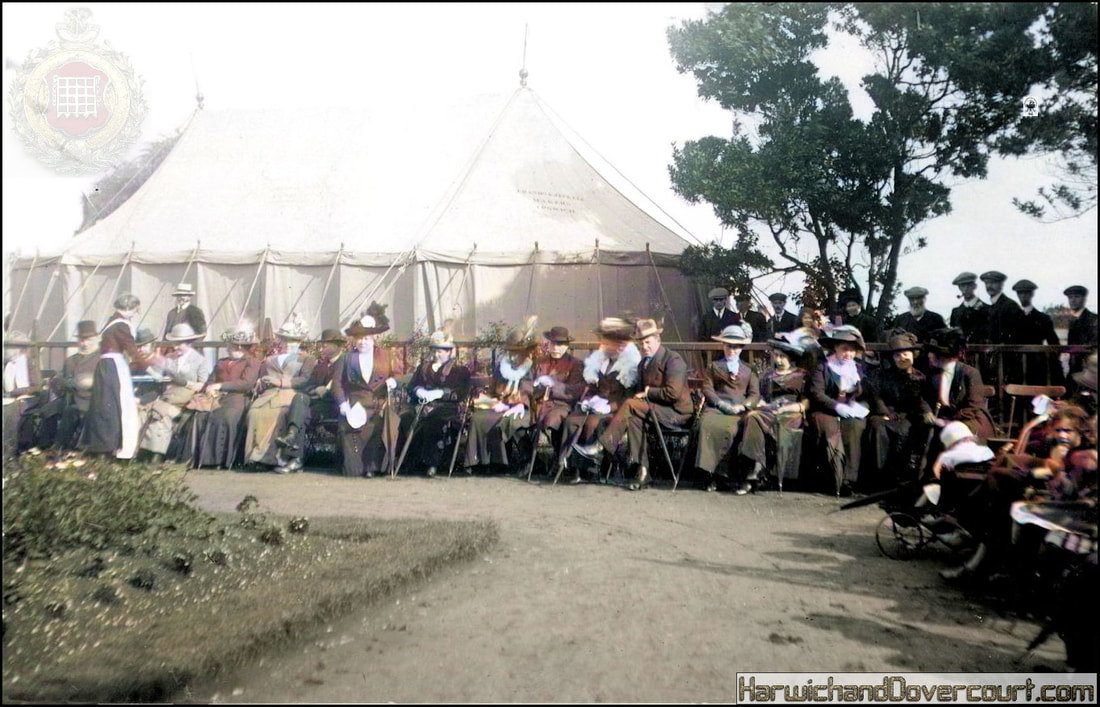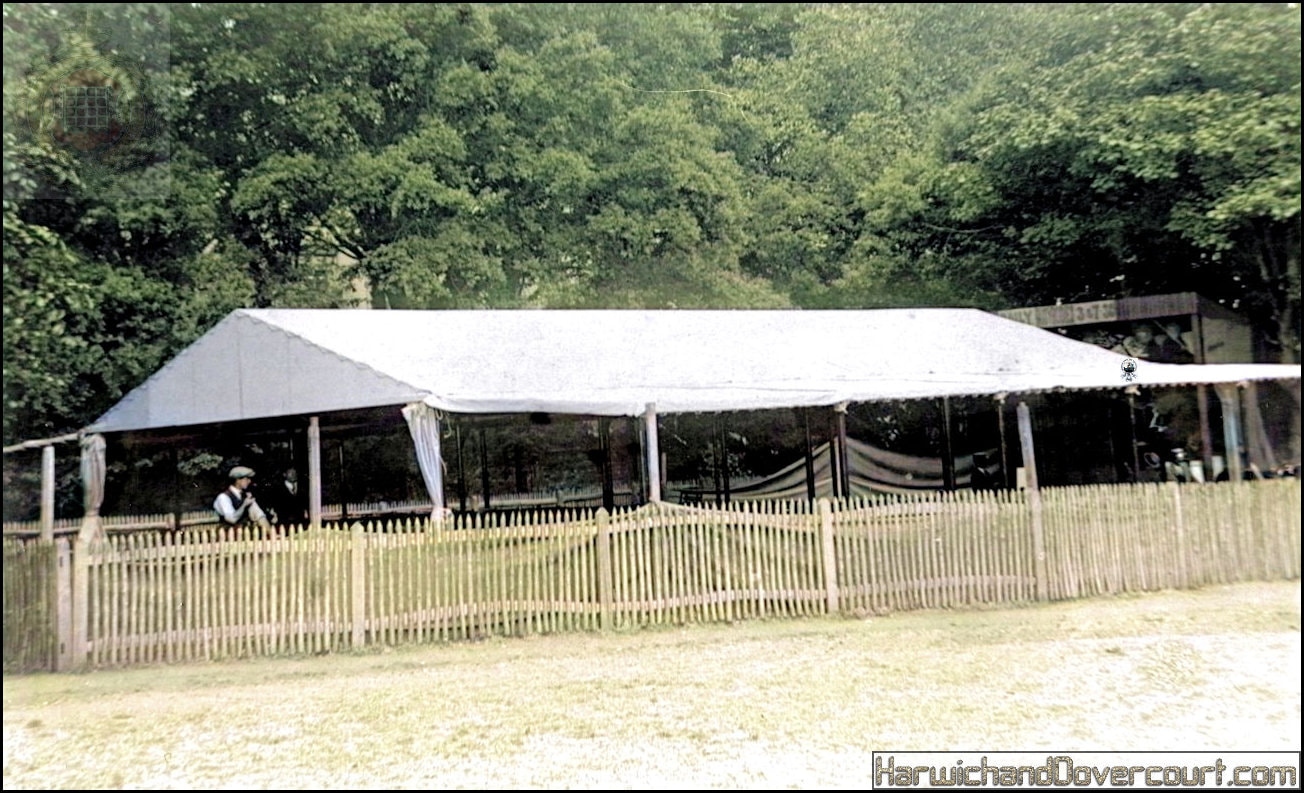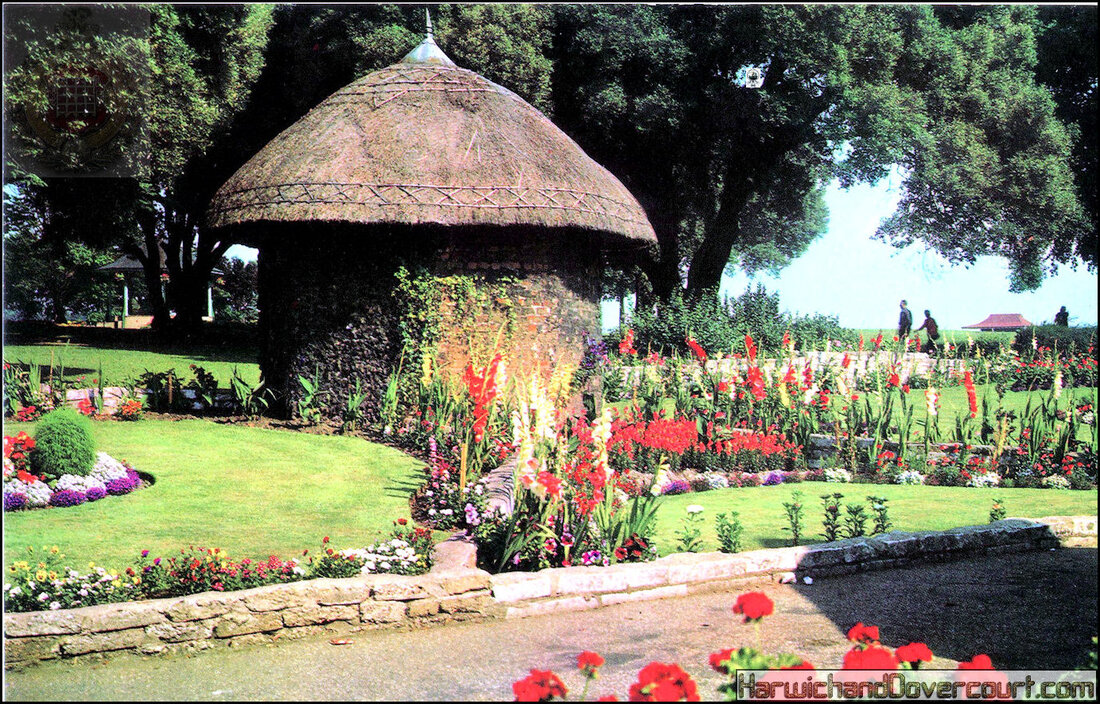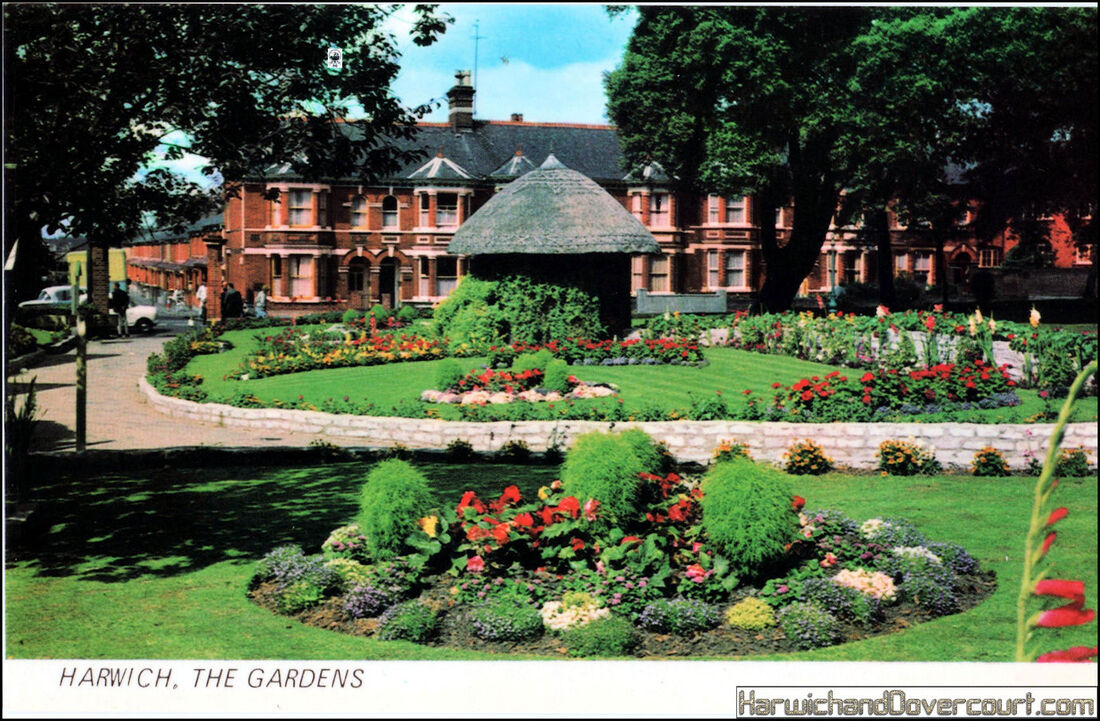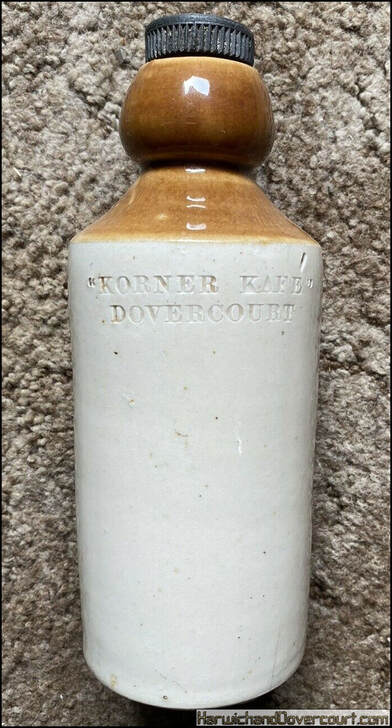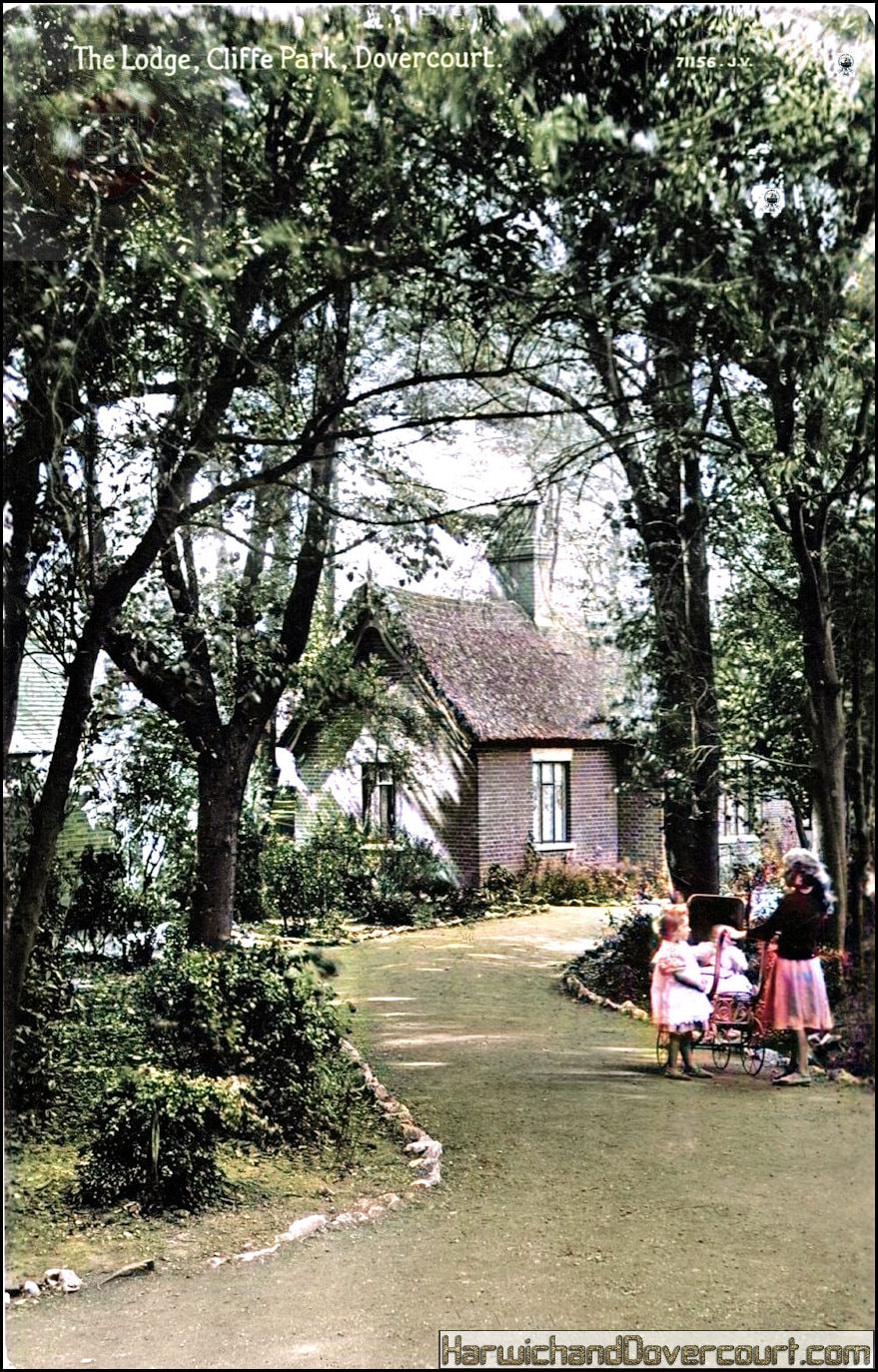Dovercourt Pleasure Gardens
01 36077 Cliffe Park, Dovercourt Bay (1939) H&D FC
02 D.4 Cliff Park Dovercourt (1956) F.Pawsey FW

Cliffe Park in Dovercourt, Essex was built upon land, which was originally used as a military training ground covering 25 acres.
In 1845 John Bagshaw moved to Harwich in Essex and acquired land at nearby Dovercourt, where he developed plans with the help of W.H. Lindsey, a London architect, to build a new resort overlooking the sea. He started the project in 1845 by building a mansion, Cliff House, for himself and his family and actively promoted a railway link to Harwich. When a chalybeate spring was discovered in the grounds of Cliff House, Bagshaw extended the property to incorporate a spa, library, pump room, and conservatory. He next developed Orwell Terrace where his son Robert John Bagshaw, also an MP for Harwich, moved into Banksea House in 1857. However, the developments, which included Marine Parade and the Cliff Estate, caused him financial difficulties and he was declared bankrupt in 1859.
He died in Norwood in 1861 after the contents of his house and spa had been sold and his estate broken up. Cliff House was demolished in 1909 and the Spa in 1920. He had married twice and had a son and 3 daughters. His son John Robert continued the development of Dovercourt and became MP for Harwich.
After the house was demolished, the land was subsequently leased in February 1910 by the Harwich Borough Council, for residents and visitors alike to enjoy.
Although the park was already in use by 1910, it was officially opened on the 22nd of June 1911 by the then Mayor Samuel Robert Groom, now with the addition of a musical Bandstand, to celebrate the Coronation of King George V.
There is still a park keepers house in Cliff Park, until the early 1980’s the park superintendent and his family lived in the house. The thatched summer house which was built in approximately 1845 is situated in the park and has listed building status.
In 1935 to celebrate the Silver Jubilee of George V, a children’s play area was opened by the then Mayor Charles Lewis Hills.
Today Cliff Park (the additional “e” was dropped) in Dovercourt covers an area of approximately 4.5 hectares and consists of formal garden areas, seafront shelters, a bandstand and large open areas of grass and mature trees. There are also public conveniences and a café. Cliff Park also offers a small games area (MUGA), an informal football pitch, an outdoor gym and a children's play area. There are several tarmac paths criss-crossing the park which are accessible to all users.
The nearest public car park to Cliff Park is at Milton Road approximately 400m away or there is parking available in adjacent streets. The park offers beautiful panoramic views of Dovercourt Bay and the North Sea.
In 1845 John Bagshaw moved to Harwich in Essex and acquired land at nearby Dovercourt, where he developed plans with the help of W.H. Lindsey, a London architect, to build a new resort overlooking the sea. He started the project in 1845 by building a mansion, Cliff House, for himself and his family and actively promoted a railway link to Harwich. When a chalybeate spring was discovered in the grounds of Cliff House, Bagshaw extended the property to incorporate a spa, library, pump room, and conservatory. He next developed Orwell Terrace where his son Robert John Bagshaw, also an MP for Harwich, moved into Banksea House in 1857. However, the developments, which included Marine Parade and the Cliff Estate, caused him financial difficulties and he was declared bankrupt in 1859.
He died in Norwood in 1861 after the contents of his house and spa had been sold and his estate broken up. Cliff House was demolished in 1909 and the Spa in 1920. He had married twice and had a son and 3 daughters. His son John Robert continued the development of Dovercourt and became MP for Harwich.
After the house was demolished, the land was subsequently leased in February 1910 by the Harwich Borough Council, for residents and visitors alike to enjoy.
Although the park was already in use by 1910, it was officially opened on the 22nd of June 1911 by the then Mayor Samuel Robert Groom, now with the addition of a musical Bandstand, to celebrate the Coronation of King George V.
There is still a park keepers house in Cliff Park, until the early 1980’s the park superintendent and his family lived in the house. The thatched summer house which was built in approximately 1845 is situated in the park and has listed building status.
In 1935 to celebrate the Silver Jubilee of George V, a children’s play area was opened by the then Mayor Charles Lewis Hills.
Today Cliff Park (the additional “e” was dropped) in Dovercourt covers an area of approximately 4.5 hectares and consists of formal garden areas, seafront shelters, a bandstand and large open areas of grass and mature trees. There are also public conveniences and a café. Cliff Park also offers a small games area (MUGA), an informal football pitch, an outdoor gym and a children's play area. There are several tarmac paths criss-crossing the park which are accessible to all users.
The nearest public car park to Cliff Park is at Milton Road approximately 400m away or there is parking available in adjacent streets. The park offers beautiful panoramic views of Dovercourt Bay and the North Sea.
03 7-131 Dovercourt Pleasure Gardens, S&S C Series (1913) FW
04 108.2 A peep at the Pleasure Garden, Dovercourt Empire View (1937) FW
05 5144 Cliff Park, Dovercourt (1952) Photo Precision FW
06 71153 The Shelter, Cliffe Park, Dovercourt (1911) Valentines FW
The Shelter, Cliffe Park, Dovercourt, Essex. c.1911
This shelter sat upon the mound behind Orwell Terrace and as a child I always wondered why the mound was there, perhaps a secret bunker, storm tunnel or more likely just an elevated terrace to give a better view, from which to watch the shipping going in and out of Harwich.
A military map of 1811 shows that the Cliff Park area of Dovercourt was originally a military exercising ground, but within these grounds around 1845, John Bagshaw built himself a mansion called Cliff House, which had extensive grounds and gardens.
Cliff House was eventually demolished in 1909 The park itself was officially opened on June 2nd 1911 to coincide with the coronation of King George V. It included a bandstand (with deckchairs to hire), lawns, flower beds and weekly firework displays.
This shelter sat upon the mound behind Orwell Terrace and as a child I always wondered why the mound was there, perhaps a secret bunker, storm tunnel or more likely just an elevated terrace to give a better view, from which to watch the shipping going in and out of Harwich.
A military map of 1811 shows that the Cliff Park area of Dovercourt was originally a military exercising ground, but within these grounds around 1845, John Bagshaw built himself a mansion called Cliff House, which had extensive grounds and gardens.
Cliff House was eventually demolished in 1909 The park itself was officially opened on June 2nd 1911 to coincide with the coronation of King George V. It included a bandstand (with deckchairs to hire), lawns, flower beds and weekly firework displays.
07 Cliff Park, Dovercourt (1912) J.T.Ward FW
08 D-45960 Dovercourt. The Shelter Cliff Park (1912) Photochrom FW
09 12 47105 Cliff Park, Dovercourt (1912) FW
10 The Park, Dovercourt (1910) H&D FW
~ "The Park" Dovercourt ( 1 ) ~ The newly opened, Dovercourt Park, Essex in 1910 ~
Two series of cards were produced, for the opening of "Cliffe Park" which was officially opened on June 22nd 1911, to coincide with the coronation of King George V. It was built within the grounds of John Bagshaw's house which was demolished a few years earlier.The park and gardens included a bandstand (with deckchairs to hire), concert corner, beautiful lawns, flower beds and weekly firework displays. The bandstand was brought back to life in 2009 following a major refurbishment.The park, spa and grounds were extremely popular with regular concerts and weekly firework displays.
Two series of cards were produced, for the opening of "Cliffe Park" which was officially opened on June 22nd 1911, to coincide with the coronation of King George V. It was built within the grounds of John Bagshaw's house which was demolished a few years earlier.The park and gardens included a bandstand (with deckchairs to hire), concert corner, beautiful lawns, flower beds and weekly firework displays. The bandstand was brought back to life in 2009 following a major refurbishment.The park, spa and grounds were extremely popular with regular concerts and weekly firework displays.
11 The Avenue, Cliffe Park, Dovercourt (1911) H&D FW
12 New Park Dovercourt (1910) RP Unknown FW
13 The Park, Dovercourt (1910) Unknown FW
14 New Park Dovercourt 03 (1910) H&D FW
15 The Park Dovercourt (1910) H&D FW
16 New Park Dovercourt a (1910) H&D FW
17 13-7149 The Park, Dovercourt Willson (1913) FW
18 7-130 Dovercourt Pleasure Gardens (1911) H&D C FW
19 28 The Park, Dovercourt (1951) Excel FW
20 76576 Cliffe Park,Dovercourt (1913) Bell's FW
21 The Mayors "Garden Party", Cliffe Park, Dovercourt (1913) by Steggles
The Mayors "Garden Party", Cliffe Park, Dovercourt (1913) by Steggles
The Mayor of Harwich for seven years (1912 - 1918) was local builder & J.P., Edward Saunders (M.B.E.) who along with the Alderman W.McLearon organised an annual "Garden Party" in July 1913. While the bands played, tea and food was served in the park to over 300 guests, which had officially opened two years earlier on Thursday 22nd of June 1911, to coincide with the coronation of King George V.
The park included a bandstand (with deckchairs to hire), lawns, flower beds and weekly firework displays. The land originally a military exercising ground, but purchased in 1845, by John Bagshaw, who built himself a mansion called "Cliffe House", had extensive grounds and gardens.
Cliff House was eventually demolished in 1909.
The Mayor of Harwich for seven years (1912 - 1918) was local builder & J.P., Edward Saunders (M.B.E.) who along with the Alderman W.McLearon organised an annual "Garden Party" in July 1913. While the bands played, tea and food was served in the park to over 300 guests, which had officially opened two years earlier on Thursday 22nd of June 1911, to coincide with the coronation of King George V.
The park included a bandstand (with deckchairs to hire), lawns, flower beds and weekly firework displays. The land originally a military exercising ground, but purchased in 1845, by John Bagshaw, who built himself a mansion called "Cliffe House", had extensive grounds and gardens.
Cliff House was eventually demolished in 1909.
22 14 Dovercourt Park, Concert Tent (1913) H&D FW ~ Korner Kafe
23 15 Dovercourt Park Hut (1980) H&D FW
24 Harwich, The Gardens (1980) FW
Korner Kafe, Ginger Beer Bottle,Dovercourt Park (1911) H&D FW |
25 1156 The Lodge, Cliff Park, Dovercourt (1913) by J.Valentines H&D FW |
#JV 71156 - The Lodge, Cliffe Park, Dovercourt (1912) by Valentines
This postcard shows the "Lodge" and gardens in July 1913 over 110 years ago. The photographer captured the scene, at the park, which had officially opened two years earlier on June 2nd 1911, to coincide with the coronation of King George V. The park itself, included a bandstand (with deckchairs to hire), lawns, flower beds and weekly firework displays. Originally the land was used as a military exercising ground, but purchased in 1845, by John Bagshaw, who built himself a mansion called "Cliffe House", including extensive grounds and gardens, however it was sadly demolished in 1909 and the land subsequently purchased, for the local residents and visitors to enjoy.
This postcard shows the "Lodge" and gardens in July 1913 over 110 years ago. The photographer captured the scene, at the park, which had officially opened two years earlier on June 2nd 1911, to coincide with the coronation of King George V. The park itself, included a bandstand (with deckchairs to hire), lawns, flower beds and weekly firework displays. Originally the land was used as a military exercising ground, but purchased in 1845, by John Bagshaw, who built himself a mansion called "Cliffe House", including extensive grounds and gardens, however it was sadly demolished in 1909 and the land subsequently purchased, for the local residents and visitors to enjoy.
